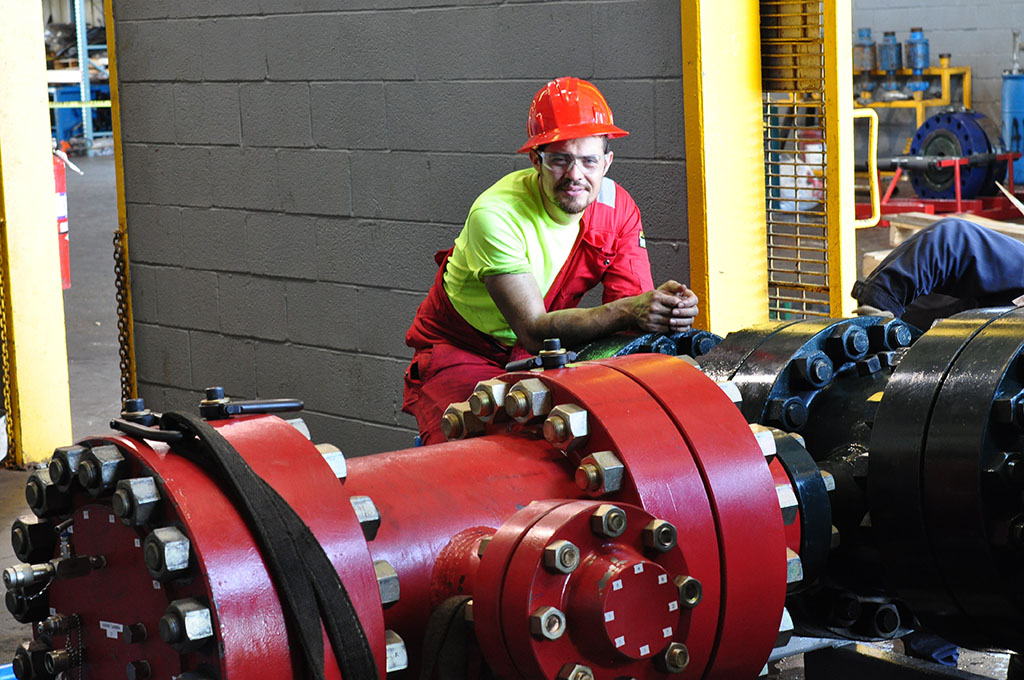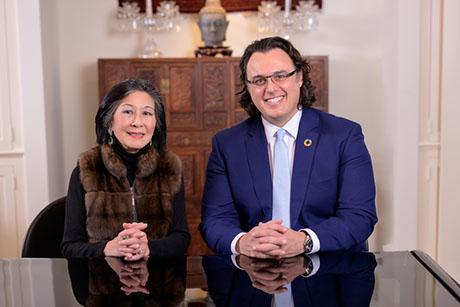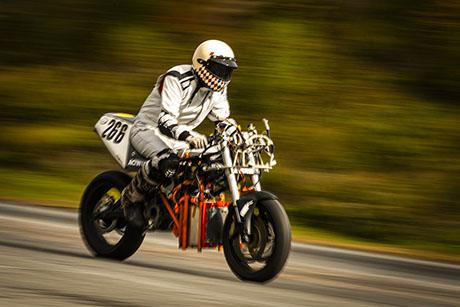The Making of a Mechanical Engineer in Seven UROPs
In 2004, a few days into his first semester at MIT, Folkers Rojas ’09, SM ’11, PhD ’14 stopped by the office that housed the Undergraduate Research Opportunities Program (UROP). Having worked through all four years of high school in Miami, he wanted to ask where he might look for a part-time job on campus. As luck would have it, there was an opening for a student to help with processing applications for UROP. Even 15 years ago, this was a big task. The Institute’s flagship experiential learning program, UROP launched in the fall of 1969 with just 25 students. Since then, the program has grown steadily; five decades after its inception, it involves more than 90 percent of undergraduates in faculty-mentored research across all disciplines.
In those days before the whole process moved online, “My job was to receive, staple, and file the applications,” says Rojas, today cofounder of Raptors Design Inc., a design consultancy and creator of a patent-pending technology for a safety tool to seal off free-flowing oil wells. He is also a part-time instructor in the MIT Department of Mechanical Engineering. “In the midst of shuffling papers, I took the time to skim the applications. They all looked so cool.”
Rojas signed up for his first UROP the following semester, working with Catherine Drennan, professor of chemistry and biology, on a protein crystallography project. He would go on to participate in a total of seven UROP projects in three separate departments before graduating with degrees in mechanical engineering and nuclear science and engineering in 2009. The UROPs included an attempt to build a satellite that could harvest solar energy, designing a camera for MIT’s Wallace Astrophysical Observatory, and performing a detailed thermal analysis for an energy storage project.
“I was really clueless about a lot of things when I arrived at MIT,” recalls Rojas. “I thought that a mechanical engineer was the guy who fixed your car. The UROPs I took gave me the experience and skills I needed to thrive at school, and afterward.”
Rojas also learned where to ask for help on campus. He spent hours at the MIT Hobby Shop under the tutelage of Ken Stone ’72. When he needed to fabricate a metal lid for the vacuum-sealed cryogenic chamber in the Wallace Observatory camera, he received invaluable instruction in metalworking from Mark Belanger at the Edgerton Center Machine Shop. “I give those two instructors half the credit for my education at MIT,” he says.
James Elliot ’65, SM ’65, the late professor of astronomy and planetary physics, had been Rojas’s faculty advisor on the Wallace Observatory UROP. In the fall of 2008, for another UROP, Elliot appointed Rojas as chief engineer for a camera system upgrade on one of the Magellan telescopes at the Las Campanas Observatory in Chile. As chief engineer, Rojas would be responsible for all logistics, as well as for the evaluation, design, and manufacture of any parts used in the upgrade. “It was an enormous challenge,” Rojas recalls. “I mean, I was a third-year undergraduate. But Jim thought I could do it. And when people like that believe in you, you start to believe in yourself.”
At the beginning of his senior year, on yet another UROP, Rojas worked with Alex Slocum ’82, SM ’83, PhD ’85, Pappalardo Professor of Mechanical Engineering, on solar energy storage. That project evolved into Rojas’s master’s thesis, which Slocum advised. In April 2010, the Deepwater Horizon oil spill began spewing millions of barrels worth of oil into the Gulf of Mexico. Slocum was asked by the US secretary of energy to serve on a committee devising alternative strategies to close the well.
“Alex had an idea for a sort of industrial hairball, a wire entanglement flexible enough to create a blockage in a [roughly] 0.5-meter-diameter pipe but stiff enough to stay in place in pressures up to 20,000 psi,” Rojas explains. That technology became the basis for his PhD thesis.
In 2014, shortly after completing his doctorate—and having paid his experience forward as a graduate student mentor to several UROP students—Rojas launched Raptors Design with Slocum. In addition to developing oil well control tools, Raptors offers consulting services for a broad variety of industries. Currently, Rojas is helping on an MIT project to clean seaweed from Caribbean beaches in collaboration with the navy of the Dominican Republic and other organizations.
“I’d never designed a boat before,” says Rojas. “But I can take on these challenges thanks to my UROP experience: lab protocols, working with a mill and lathe, analysis-driven design, project management, and—most of all—when and how to ask for help. These are all things I learned at MIT through the UROP program.”
Learn more about UROP as it celebrates its 50th anniversary throughout the 2019–20 academic year.



